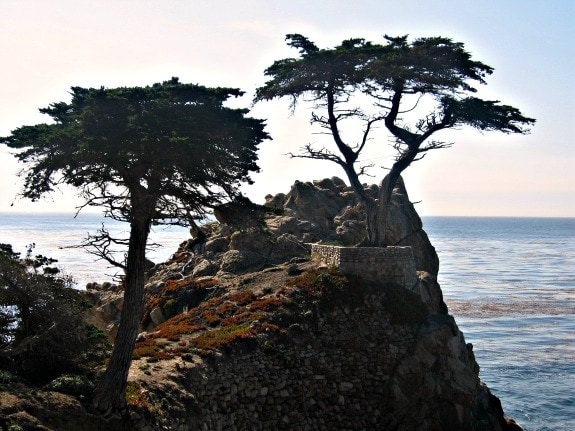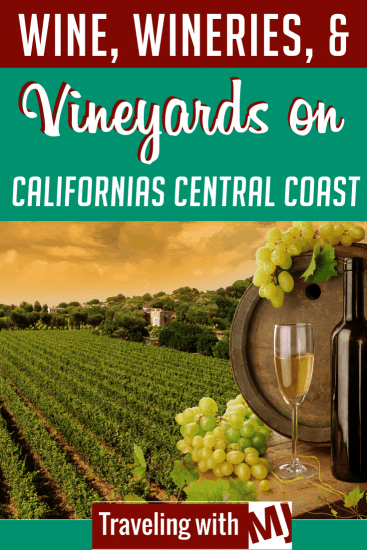
California is the nation’s largest wine producer and California’s Central Coast offers some of the best wine and most breathtaking scenery in the state. Many wineries are small, family-owned operations so travelers have the opportunity to meet with the actual winemaker or proprietor to learn about the history and culture of this area.
From Ventura up to Monterey, the cities of California’s Central Coast are home to tasting rooms and artisanal wineries while the valleys are home to picturesque vineyards and wine estates. As always with travel on California’s Central Coast, the best way to explore is a California road trip along the Pacific Coast Highway.
Ventura Region
Commonly known as the gateway to California’s wine region, Ventura County boasts its own world-class wine experience with numerous boutique wineries crafted from California’s best grapes. The best way to experience these wineries is the Ventura County Wine Trail which includes artisan wineries and hot restaurants. Ventura, Ojai, and Oxnard Convention and Visitors Bureaus have also joined in on the project and have created a more complete resource for information on activities in the area.
Santa Barbara Region
The Santa Maria Valley and the Santa Ynez Valley’s of Santa Barbara’s wine country are home to myriad microclimates and terrains and hundreds of wineries growing some 55 different wine grapes. Made famous by the movie Sideways, wines from this region are popular the world over. The microclimates of the Santa Rita Hills, Happy Canyon Ballard Canyon and Los Alamos offer visitors some of the best that California has to offer. Visitors can also sample these amazing wines at the 154 tasting rooms located in Downtown Santa Barbara on the Urban Wine Trail or the 25 tasting rooms in Solvang.
San Luis Obispo Region
A prime destination for wine lovers, San Luis Obispo County offers a variety of tasting experiences. With over 280 wineries vinifying 40 different grape varieties, there is a vintage and venue to satisfy every preference. Designated wine trails and clustered tasting rooms make it easy to explore the region. San Luis Obispo Wine Country includes two small adjoining valleys—the Edna Valley and Arroyo Grande Valley—and other nearby winegrowing areas such as Paso Robles which was recently named the 2013 “Wine Region of the Year,” by Wine Enthusiast. Each of these areas shares a unifying proximity to the ocean, as well as to each other making exploring the area super convenient.
Monterey Bay Region
Monterey Wine Country boasts over 175 unique vineyards most of which are in a 90-mile-long valley, with only eight primary viticulture soil types. Today’s growers use innovative techniques to preserve the land for future generations while producing the highest quality grapes, 42 varietals go into the area’s wines. The more southern Santa Cruz Mountains Appellation is home to more than 70 wineries, 200 small vineyards and 1,500 acres of wine grapes. As part of the historic Santa Clara Valley wine-growing region, Gilroy is home to a number of award-winning local wineries that offer tastings and tours in a casual, relaxing environment. The town of Carmel by the Sea has a “Wine Walk Passport” that includes a tasting at 9 of the town’s 14 tasting rooms, a perfect way to sample the region’s wine.
Here’s a cheat sheet of the cities in California’s Central Coast regions:
- Ventura Region: Ventura County, Camarillo, Conejo Valley, Heritage Valley, Ojai, Oxnard.
- Santa Barbara Region: Santa Barbara County, Buellton, Carpinteria Valley, Lompoc Valley, Santa Maria Valley, Solvang, Santa Ynez Valley.
- San Luis Obispo Region: San Luis Obispo County, Arroyo Grande/Grover Beach, Atascadero, Cambria, Cayucos, Morro Bay, Nipomo, Paso Robles, Pismo Beach.
- Monterey Bay Region: Monterey County, Santa Cruz County, Carmel, Gilroy, Hollister.
Keep track of all of the things that interest you by pinning this onto your favorite Pinterest board. I’ll be pinning onto my boards about wine, California, and travel.

